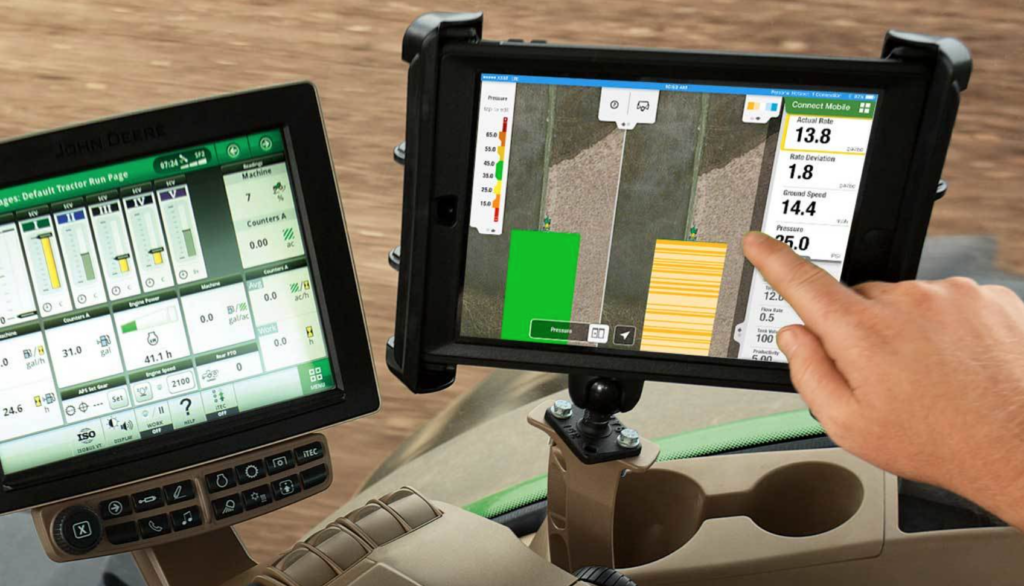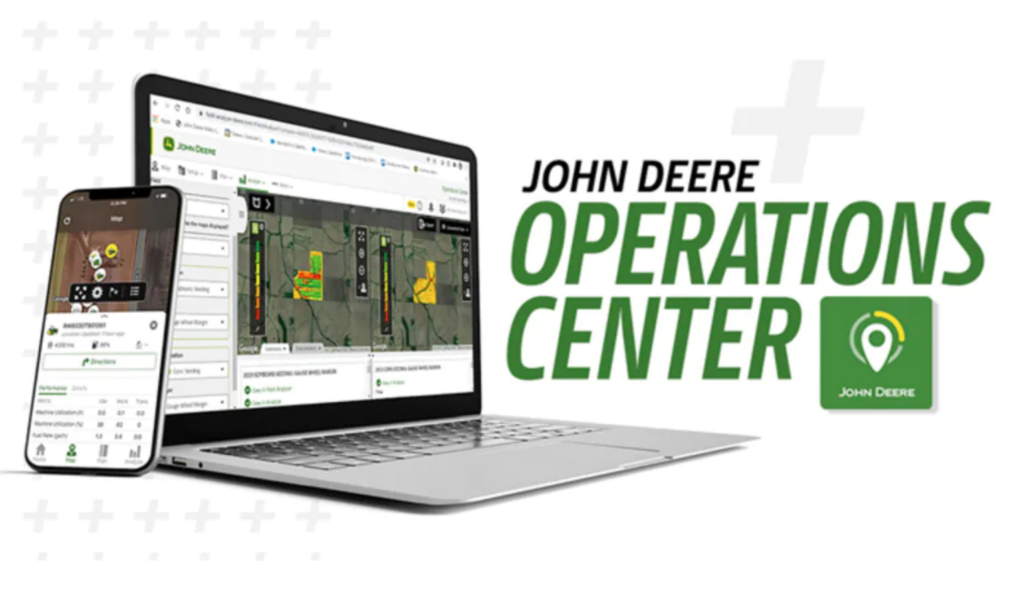John Deere: pioneering the ag-tech of the future

John Deere, the tractor company of green-and-yellow trucker hat fame, made a big bet on leveraging AI and machine learning. Fortunately, it’s paying off in spades.
John Deere occupies a somewhat unique space in the world of AI-powered companies. Often the most successful companies that leverage artificial intelligence and machine learning are “born-digital” and therefore have been able to build AI into their business from day one. Older companies, even those that have successfully made the transition to the digital world, are often at a disadvantage when it comes to making the same technology work for them. One author describes these two types of companies as “incumbents” and “challengers” noting that the incumbents often hope to use AI to become incrementally better, while the challengers can become full-blown market disrupters. A 2021 MIT-BCG report found that only 11% of companies see significant financial returns on their AI investments, which is likely explained by the number of incumbents attempting to leverage this technology.
John Deere falls into the incumbent category while defying the 11% stereotype. The history of the company dates back to 1836 when John Deere invented a steel plow which his company subsequently manufactured and marketed. As the company grew to meet the demands of the ag-tech boom of the 1960s and 70s, its leadership realized that in order to manufacture more they needed to manufacture better. Embracing a flexible manufacturing system, in 1981 John Deere built a $1.5 billion manufacturing plant that “made extensive use of computers and robots and thus enabled the company to run numerous small assembly lines simultaneously for different products and turn a profit even at low levels of output” (Britannica). This attention to efficiency and leveraging of technology made John Deere the largest agricultural machinery company in the world by the early aughts.
Given then company’s historical focus on optimizing for efficiency and early adoption of computer and automation technology, it is little surprise that John Deere made moves to leverage AI and Machine Learning in its products. In recent years Deere has started churning out products that utilize machine learning and computer vision to improve farmers’ yields and reduce manual labor. A fantastic example of one such product is the LettuceBot, which uses Machine Learning to “distinguish between lettuce plants and weeds… it can do so in under a second, and kill only the latter with a small amount of herbicide, reducing herbicide use on average by 90%” (Candelon et al. 2022). In order to launch this product, the first of what Deere indicates are many more to come, the company acquired Blue River Technologies for $305 million (Lev-Ram 2017).
In addition to the LettuceBot and other physical products, John Deere also spent the first few years of the 21st century building out tech products that leveraged GPS to automate the movements of farm vehicles across a field to within an inch of accuracy (Simonite 2017). This technology has grown into a larger suite of products – namely JDLink and John Deere Operations Center – which enable clients to connect the machines on a farm and to collect and analyze the data from them to make more informed decisions. As Deere executive John Stone shares, “Taking care of each individual plant unlocks a lot of economic value for farmers” (Simonite 2017).


The most interesting piece of the John Deere success story is the yet-untapped potential of the business model. As discussed above, the company’s foothold in the market was historically earned by dominating in the agricultural manufacturing space – i.e. developing physical products such as tractors, plows, trailers, and the like. As John Deere moderinzed it expanded its offerings with smart machines and tech product suite, which it currently sells at a premium or for a subscription cost. However, as one analyst pointed out, John Deere could pivot it’s business to move into profit-sharing arrangements with farmers – a “radically different business model” (Candelon et al. 2022). The potential for added value capture is immense, but not without its challenges. As born-digital companies in the ag-tech world proliferate (see CropX, Tracxn, and Gamaya to name a few) there is greater competition for market share, and these “challengers” are able to be more AI and machine learning-forward than responsive. However, John Deere’s massive global footprint positions it well to continue to capture the market as they continue to innovate in the AI-driven machine and data product spaces.



Lettuce Bot! Really interesting thinking about this article in relation to Heili’s on Oracle and the bee population. As food scarcity becomes a mounting issue in the world, preventing waste and herbicide through machines like Lettuce Bot increase the value of this innovation. I wonder if they will deploy the same kind of technology for seed planting and harvesting and how it will adjust to variations around soil and classification. Really fascinating to think about how technology adapt to understand the slight changes in coloration in the same hybrid of corn and in the same area.
Thanks Stephen, yes great thought and lots of thematic overlap with Heili’s piece on Oracle. I also wonder whether a partnership with a company such as Monsanto might be an area John Deere would move into. It seems that developing machinery to facilitate a certain type of seed planting, especially with as dominant a company as Monsanto, could be a productive collaboration.